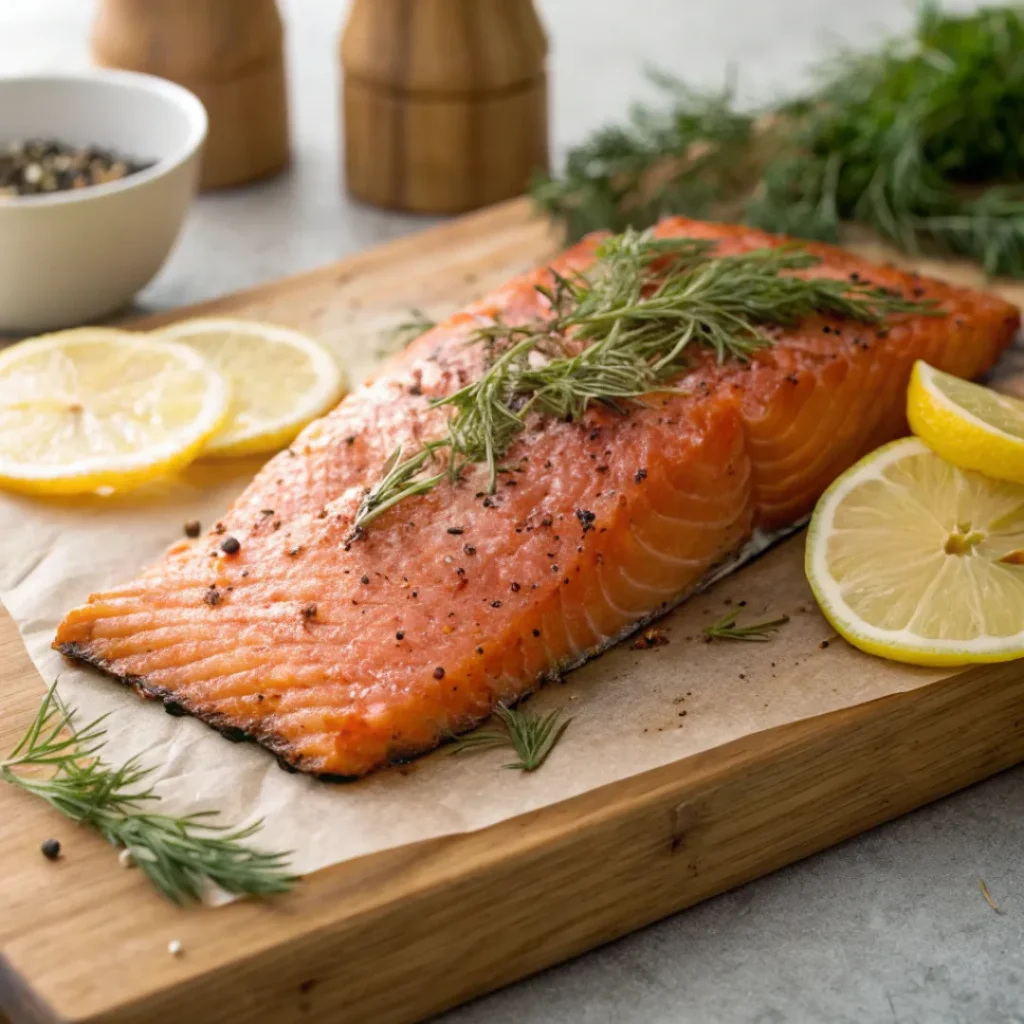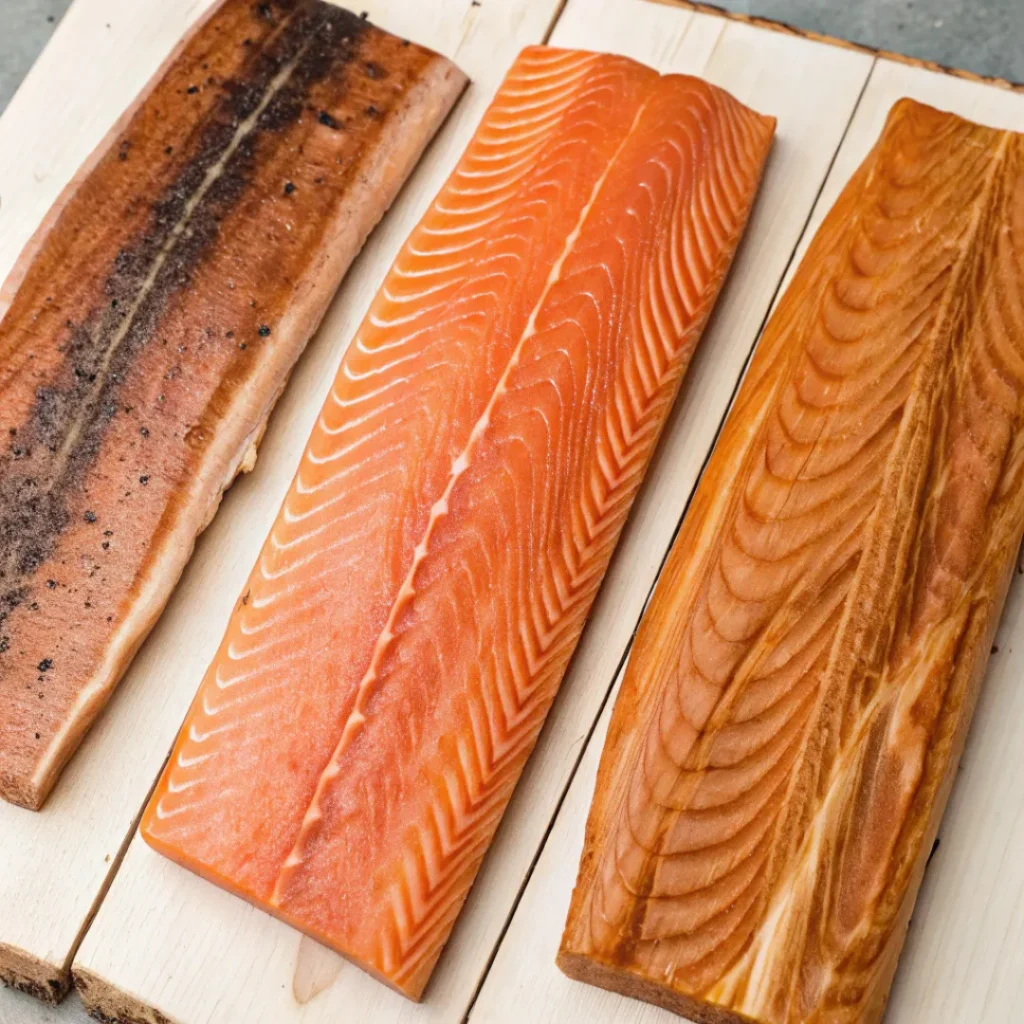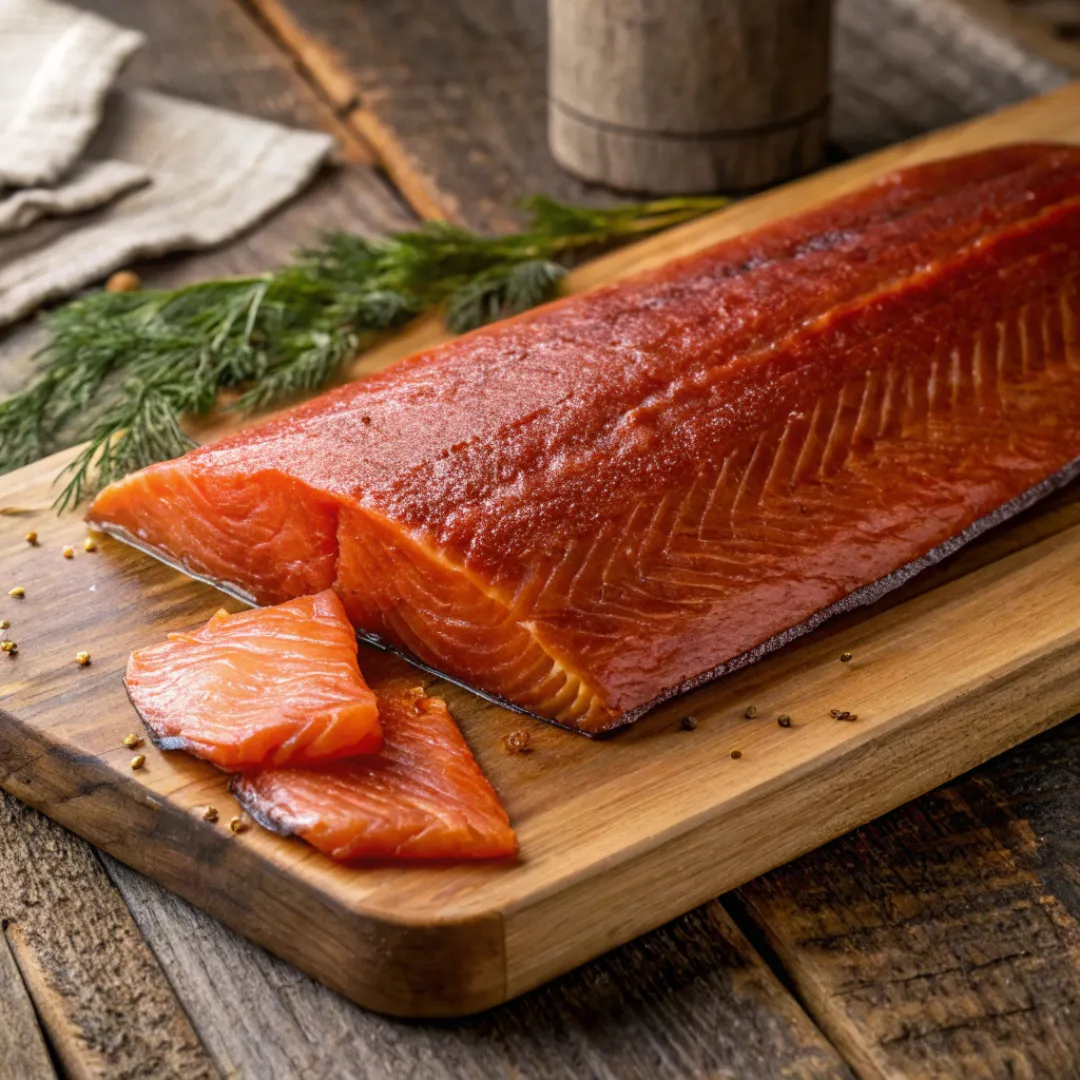Smoking salmon is a process that combines curing and exposure to smoke to enhance its flavor, texture, and shelf life. Historically, smoking was used to preserve fish for long periods, especially in coastal communities where fresh fish was abundant. Today, it is not only a preservation method but also a technique that imparts complex flavors, making smoked salmon a gourmet food appreciated worldwide. Many enthusiasts often ask, how long does it take to smoke a salmon? The answer depends on the smoking method and desired texture, which we’ll explore further.
Cold Smoking vs. Hot Smoking: The Key Differences
Before diving into how long each method takes, it’s important to understand the difference between cold smoking and hot smoking. Both methods involve exposing the salmon to smoke, but the temperature at which this is done, and the final result in terms of texture and flavor, are very different.
Cold Smoking
- Temperature: 68-86°F (20-30°C)
- Process: Cold smoking does not cook the salmon but instead infuses it with smoke at low temperatures over an extended period.
- Result: A silky, raw-like texture with a mild smoky flavor.
- Common Use: Typically used for dishes where the salmon is eaten uncooked, such as on bagels, in sushi, or as part of a charcuterie board.
Hot Smoking
- Temperature: 120-180°F (49-82°C)
- Process: Hot smoking cooks the salmon while smoking it, resulting in a firm, flaky texture.
- Result: A more intense smoky flavor and cooked, flaky texture similar to baked or grilled salmon.
- Common Use: Hot-smoked salmon is ready to eat and can be used in salads, pasta, sandwiches, and more.

How Long Does It Take to Cold Smoke Salmon?
Cold smoking salmon is a lengthy process that can take anywhere from 12 to 24 hours, depending on the thickness of the fillet, the smoking temperature, and personal preferences for flavor intensity. Since cold smoking does not cook the fish, it is crucial that the salmon is properly cured before smoking to ensure its safety and preserve its texture.
The Cold Smoking Process
Curing the Salmon
Before smoking, the salmon must be cured with a mix of salt, sugar, and sometimes spices. This process takes 8 to 24 hours and helps remove moisture from the fish.
Read about curing techniques for salmon to learn how this process affects the flavor and texture of the fish.
Smoking Time
Once cured and dried, the salmon is placed in a smoker at 68-86°F (20-30°C). The smoking process can take anywhere from 12 to 24 hours depending on how much smoke flavor you want to impart.
Drying
After smoking, the salmon is often left to air dry, allowing the smoke to fully settle into the fish.
Why Does Cold Smoking Take So Long?
Cold smoking takes longer because it happens at such low temperatures. The extended smoking time allows the salmon to absorb a subtle smoky flavor without cooking it, resulting in the distinctive raw-like texture that cold-smoked salmon is known for.
How Long Does It Take to Hot Smoke Salmon?
Hot smoking salmon takes significantly less time than cold smoking, but the exact duration still depends on factors like the thickness of the fillet and the smoking temperature. Typically, hot smoking salmon can be done in 3 to 8 hours.
The Hot Smoking Process
Curing the Salmon
Like cold-smoked salmon, hot-smoked salmon is also cured before smoking. The curing time can range from 4 to 12 hours.
Smoking Time
After curing, the salmon is placed in a smoker that maintains a temperature of 120-180°F (49-82°C). Depending on the size and thickness of the fillet, the smoking process takes between 3 to 8 hours.
Monitoring Temperature
To achieve the right texture, it’s crucial to monitor the internal temperature of the salmon, which should reach at least 140°F (60°C) for it to be fully cooked.
Why Hot Smoking Is Faster
Hot smoking uses higher temperatures, which means the fish cooks and smokes simultaneously. This significantly reduces the time needed to smoke the salmon compared to cold smoking. The result is a fully cooked fish with a smoky, flavorful exterior.
Factors That Affect Smoking Time
The time it takes to smoke salmon can vary widely depending on several factors. Here are some of the key elements that influence the duration of both cold and hot smoking processes:
Thickness of the Salmon
Thicker fillets will take longer to smoke than thinner ones, as the smoke needs more time to penetrate the fish.
Smoking Temperature
The lower the temperature, the longer the smoking time. Cold smoking always takes longer because the salmon isn’t being cooked.
Desired Smokiness
If you prefer a strong smoky flavor, you’ll need to leave the salmon in the smoker for a longer period. Shorter smoking times result in a milder smoke flavor.
Type of Smoker
Different smokers may require different smoking times. Electric smokers tend to provide more even heat, while charcoal smokers may need more frequent attention to maintain the right temperature.
The Importance of Curing Time
Curing is a critical step in the smoking process because it removes moisture from the salmon, intensifies the flavor, and helps preserve the fish. Skipping or shortening the curing time can lead to inconsistent results, affecting both the texture and safety of the smoked salmon.
Curing Time
- Cold smoking typically requires a longer curing time of 8 to 24 hours, whereas hot smoking can be done with a 4 to 12 hour cure.
- A longer curing time results in a firmer texture and more intense flavor.
Choosing the Right Wood for Smoking
The type of wood used in smoking has a significant impact on both the flavor and smoking time. Different woods burn at different rates, and some impart stronger flavors than others.

Common Woods for Smoking Salmon
Alder
Provides a mild, slightly sweet smoke flavor. Commonly used for both cold and hot smoking.
Hickory
A stronger, more intense smoke. Ideal for hot smoking if you want bold flavor.
Applewood
Adds a sweet, fruity flavor that complements the natural taste of the salmon.
Maple
Gives the salmon a mild, sweet, and nutty flavor.
Choosing the right wood can enhance the final result, but it can also affect how long the smoking process takes. Hardwoods tend to burn slower, which can extend the smoking time.
Artisanal vs. Commercial Smoking: Does It Change the Timing?
The method of smoking—whether artisanal or commercial—can also influence the smoking time.
Artisanal Smoking
Hand-crafted
In small batches with attention to detail. The smoking time might be extended to allow for precise flavor control and more intimate monitoring of the process.
Cold smoking
In artisanal settings often takes the full 24 hours, while hot smoking can be extended for 8 hours or more to ensure maximum flavor infusion.
Commercial Smoking
In large-scale commercial operations, the focus is on efficiency and consistency. Smoking times are often shortened using advanced equipment, but the process remains largely the same. Commercial producers might use pre-programmed smokers to control temperature and time precisely.
Safety and Storage Tips for Smoked Salmon
Proper storage and handling are essential to keep smoked salmon fresh and safe to eat.

Refrigeration
- Smoked salmon should be stored at 38°F (3°C) or lower.
- Cold-smoked salmon lasts about 3-5 days after opening, while hot-smoked salmon can last up to a week.
Freezing
- Both types of smoked salmon can be frozen for up to 3 months.
- Always thaw smoked salmon in the fridge to maintain quality and safety.
Frequently Asked Questions
How long does it take to smoke a salmon at 225°F?
Smoking salmon at 225°F is considered hot smoking and usually takes around 3-4 hours, depending on the thickness of the fillet.
Can I cold smoke salmon at home?
Yes, you can cold smoke salmon at home, but it requires a smoker that can maintain low temperatures between 68-86°F and strict attention to food safety.
Do I need to cure salmon before smoking?
Yes, curing is essential to remove moisture, enhance flavor, and ensure safety during the smoking process.
Conclusion
The time it takes to smoke salmon depends heavily on the method used—cold smoking takes anywhere from 12 to 24 hours, while hot smoking typically requires between 3 to 8 hours. Factors such as the thickness of the fillet, the type of wood used, and personal preferences for smokiness also play a role in determining the smoking duration.
Understanding the differences between cold-smoked and hot-smoked salmon, along with the nuances of the smoking process, allows you to create delicious, perfectly smoked salmon every time. Whether you prefer the delicate texture of cold-smoked salmon or the firmer, bolder taste of hot-smoked varieties, the art of smoking salmon is a rewarding culinary experience.

